Refractive Lens Exchange
Refractive Lens Exchange Eye Surgery In New York City
The purpose of a refractive lens exchange (RLE) is the correction of myopia, hyperopia, or presbyopia.Hyperopia and myopia are the medical terms for farsightedness and nearsightedness, respectively; Both are measured in diopters, with higher numbers corresponding to greater severity.
ICL NYC
Refractive Lens Exchange FAQS
What is Refractive Lens Exchange Eye Surgery?
The purpose of a refractive lens exchange (RLE) is the correction of myopia, hyperopia, or presbyopia. Hyperopia and myopia are the medical terms for farsightedness and nearsightedness, respectively; Both are measured in diopters, with higher numbers corresponding to greater severity. Presbyopia is the condition in which your lens hardens, reducing your distance vision. This is extremely common and occurs to most people after they turn 40. Depends on the lens used, RLE can also correct astigmatism.
A refractive lens exchange, also known as a clear lens exchange, is, procedurally speaking, very similar to cataract surgery. An ophthalmological surgeon will perform a procedure in which your natural lens will be replaced with an artificial one called an IOL (intraocular lens). This artificial lens then works to correct your distorted vision, kind of like a contact lens, but within your eye. The main advantage of the refractive lens exchange procedure is that it can correct a much higher degree of near-sightedness than LASIK, and has shown to give much better outcomes for people with medium to high myopia. It can also help correct the loss of near vision for people with presbyopia.
The issue being corrected will inform the choice of the artificial lens used to replace the natural one. In the simplest case, a monofocal lens is put in each eye. The lens in the dominant eye will be set for distance, and the lens in the non-dominant eye will be set for near vision. While this may sound nausea-inducing, many people get used to focusing with different eyes and are happy with their outcome. The second choice is a multifocal lens, in which each lens has three focal points: near, intermediate, and distance. These are the three common ranges and this lens would be a common choice used to correct Presbyopia. The third choice is an extended depth of field lens (EDoF), which are the newest type of lenses. The extended depth of field lenses offer much improved intermediate distance vision. For example, looking between a computer screen and objects on your desk would be easier with the EDoF. Studies have shown that the EDoF and trifocal lenses give similar distance vision, but trifocal lenses may outperform EDoF for near distance. There is some evidence that EDoF lenses improve contrast sensitivity in vision.
The choice between trifocal and EDoF will ultimately depend on your doctor’s recommendation, as there are many clinical variables that can affect outcomes, such as pupil size, eye shape and health, and others. It is important to inform your doctor about your occupation and hobbies so that they can choose the best option for you.
What is the RLE procedure?
The surgery itself is very similar to cataract surgery. Before the procedure, you will have to come into the office to measure the dimensions of the eye, and to ensure the new lens is safe to implant. If the surgeon decides the new lens is the best course of action, a procedure date will be set.
Two days prior to the surgery, you will be started on antibiotic drops. On the day of the surgery, your eyes will be dilated, and you will be given topical and IV sedation. The RLE procedure is painlessly performed under anesthesia, usually in under 30 minutes. The surgeon will create a small opening in the cornea, the clear front layer of the eye. From there, the old lens is removed, and the new lens is put in its place. Eye drops and ointments may be placed in the eye to help with healing and to prevent scarring. After the procedure, the surgeon may give you a regimen of eye drop and pills to take to reduce the risk of any healing complications.
You will have a follow-up appointment the day after, and then additional follow-ups in the weeks and months after. Depending on the patient, yearly checkups might be recommended to guarantee the best final vision possible. Most patients can get back to normal activities within a day, although some activities like intense exercise may be limited for a week.
Benefits of Refractive Lens Exchange and Drawbacks
As with other eye procedures, there are inherent risks to operating on the eye. These risks are similar to cataract surgery, which is the most common surgery performed in the US: eye infections, increased eye pressure which may cause Glaucoma, retinal detachments, and a dislocated lens. These risks can be mitigated by proper pre and post-operative care, and prophylactic measures. If you are at risk for any of these conditions, your doctor will discuss steps that can be taken. Depending on which lens is chosen, a patient may see glare or blur from the lens. For most causes of myopia, laser vision correction would be the best course of action, and so consult a doctor to determine if you are a good candidate for RLE.
For presbyopia, RLE is one of the only operative procedures that fully corrects the stiffed lens. LASIK, PRK, and other refractive surgery can give monovision, but not near, intermediate, and distance in both eyes. For a person that is unhappy with glasses, and contacts, RLE may the best choice for gaining full vision back in both eyes. It will also eliminate the need for cataract surgery later in life.
Who is a Good Candidate and who isn't?
The following people should consider RLE:
- At least 45 years old who are nearsighted or farsighted
- Generally healthy eyes
- Ideally Presbyopic, but not required
- No longer wants to use glasses or contacts for reading
The following people should consult a doctor before considering RLE:
- Underlying eye conditions or family history of Glaucoma, Retina detachments, or macular degeneration
- High Glaucoma risk like in patients with diabetes
- Patients who are pregnant or nursing
WHY CHOOSE MANHATTAN EYE?

Why Manhattan Eye
Dr. Rapoport is a cataract surgery expert and has extensive expertise in refractive cataract surgery. She has experience implanting both the Symfony and the Alcon Panoptix lens, the newest FDA-approved lens that is providing excellent distance and near vision. Dr. Rapoport takes meticulous measurements and calculations at your RLE surgery consultation, and guides each patient to a well-informed individualized surgical plan, taking into account your specific ocular circumstances and visual goals.
“I've been essentially blind my whole life and recently decided to get elective eye surgery. I unfortunately did not qualify for Lasik, but did qualify for PRK.
Dr. Rapoport was fantastic - she explained all my options in detail and was very diligent in giving me instructions pre/post operations - even when I asked twice/three times. She's always available to talk and super empathetic. I could not recommend a better eye surgeon!”
Dr. Rapoport was fantastic - she explained all my options in detail and was very diligent in giving me instructions pre/post operations - even when I asked twice/three times. She's always available to talk and super empathetic. I could not recommend a better eye surgeon!”
M.V.
“Best eye doctor in New York! Dr. Rapoport is very personable, professional and most importantly a great doctor. Dr. Rapoport recently performed my LASIK surgery, for which she gave me clear pre and post-op instructions and made a point to check regularly on my progress. She did a great job to put my nerves at ease and walked me through the entire process. Now three weeks after the surgery I
can see better than ever with 20/20+ vision! I strongly recommend Dr. Rapoport if you are considering LASIK, or if you are simply in need of a great eye doctor.”
N.G.
“I have now seen Dr. Rapoport for dry eyes, removal of papillomas around my eyes, and Lasik
surgery. My experiences with her have all been wonderful. She always takes the time to
explain everything really clearly, and my results have all been great. When I originally asked
about Lasik, she gave me a very balanced perspective on my options, which I really
appreciated. She also has a great energy about her, and she's just an overall pleasure to be
around. I have referred several friends and family to her and they've all said great things about
her as well. I can't recommend her enough.”
M.T.
“After seeing Dr. Rapaport for three months I have experienced the greatest improvement for
my dry eye syndrome than I have in the past 15 years. Dr. Rapaport is very knowledgable and
caring. I am very grateful to her and her staff, in particular to Amy, who has been incredibly
helpful to me. Everyone here conducts themselves in a highly professional manner, and they
also run a tight ship in terms of timeliness. I have been seen every time without waiting any
more than 5 minutes, and this I appreciate a lot. I feel very fortunate to be a patient at this
medical practice.”
H.K.
“Dr Rapoport is a skilled, knowledgeable, sincerely caring medical professional. I started
seeing her a year ago and have since moved out of state. Regardless, it’s a priority for me to
continue under her good care.
I feel confident in her abilities - and it is my eyesight afterall!”
I feel confident in her abilities - and it is my eyesight afterall!”
P.J.




